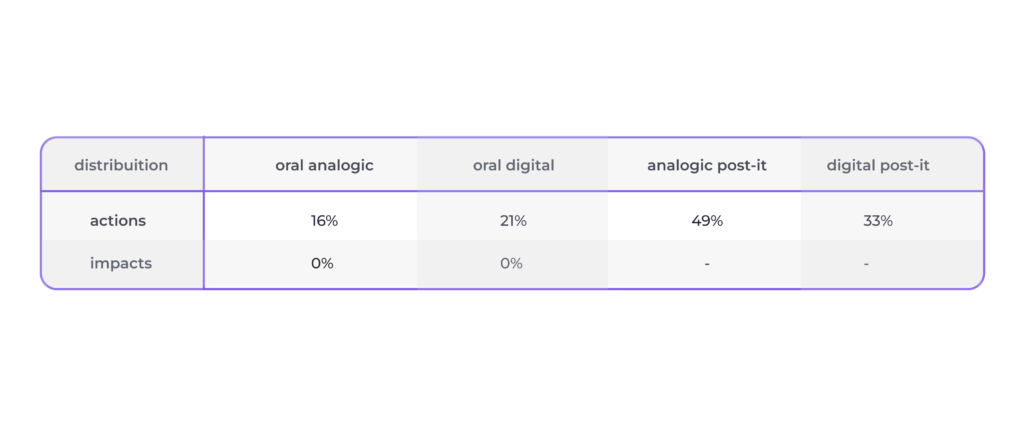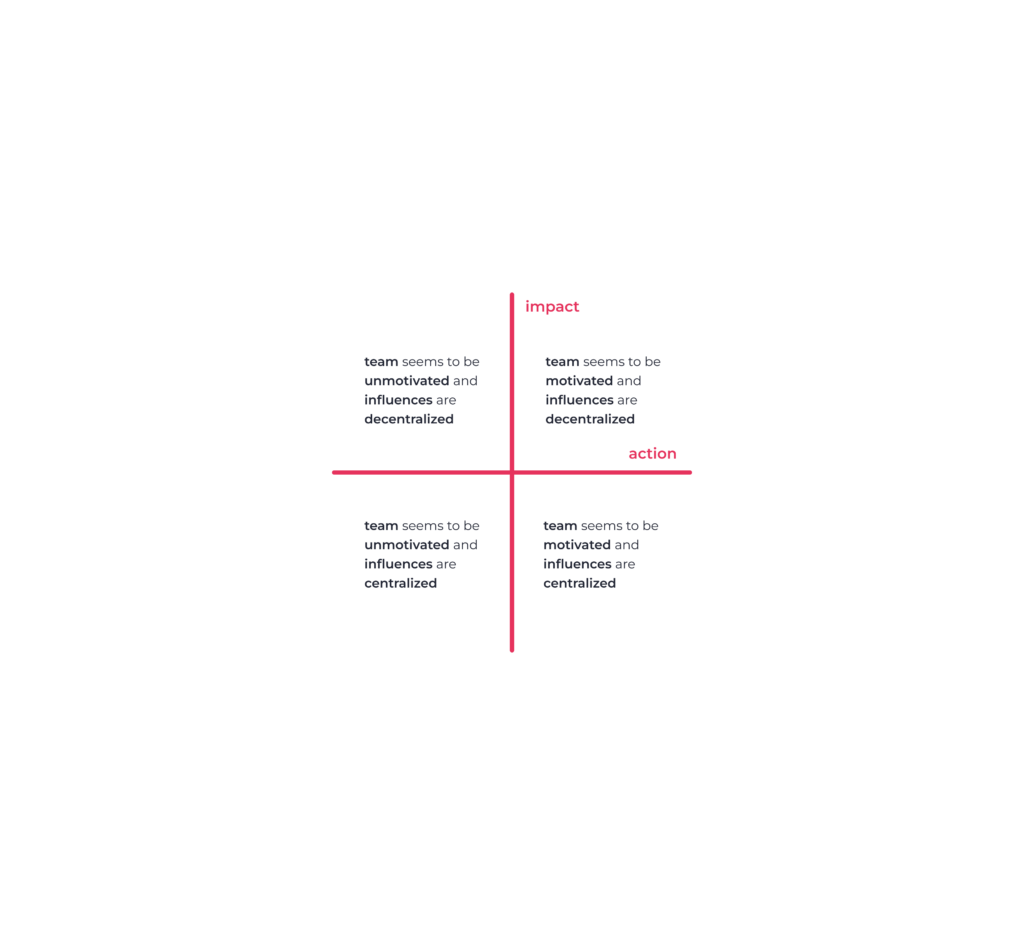the market is a constantly evolving universe. to deal with the new challenges that arise in this scenario, organizations have gone through an adaptive process, where decision-making and planning instances come to demand an increasing number of expertise.
the fact is, there is no single answer to such challenges anymore. there is a need to create as many innovative solutions as possible and, among them, select the best option. It is not by chance that organizations from different sectors have adopted a methodology that contemplates this multifaceted character and is capable of generating countless ideas: strategic creative collaboration.
in it, group activities are carried out that encourage people to actually make decisions in collaboration with each other – proposing hypotheses, debating, with diversity of opinions and balance of influences to, in the end, choose among the alternatives the one that is best.

in strategic creative collaboration activities, people need to be committed to the proposition and debate around hypotheses [co-creation] as well as being strategically aligned around choices [co-selection].
what are the problems with group activities for decision making?
in general, people use dynamics of co-creation of hypotheses based on orality. with this they discourage the commitment [participation] of people in the proposition and in the debate of hypotheses. reducing diversity and limiting the maturation of hypotheses when they are actually debated by people. most people refrain from proposing or debating in orally-based dynamics for various reasons, such as the difficulty in taking turns or the insecurity of exposing their opinions in public.
similarly, the co-selection dynamics adopted are almost always based on simple voting, which consider the majority as a choice factor. this type of selection method hides the alignment or misalignment of people in the choices. at best it can indicate people’s preferred hypotheses, but they do not necessarily measure how much each person agrees with the hypotheses, let alone how much alignment or misalignment there is in the group in relation to each of the hypotheses.
how to increase people’s participation in the co-creation of hypotheses?
using writing [brainwriting] instead of orality [brainstorming] is an important step to increase people’s involvement in co-creation. by reducing people’s effort to take other people’s turns during the activity of proposing and debating hypotheses, we expand the creative, purposeful space. many people choose to remain silent in oral meetings [brainstormings] to avoid the wear and tear of asking for speech space, requesting all the time the right to take the turn and stand.
are the hypotheses generated from written debates better or worse than those generated from oral debates?
in meetings where the proposition and debates take place through writing [brainwriting] the tendency is for more people to propose hypotheses and more people to debate, arguing for and against the written hypotheses of others.
normally when more people propose hypotheses and more people debate the proposed hypotheses there is a tendency to increase the final quality of the hypotheses, as they mature during the debate with arguments for and against coming from more people, with more diverse experience.
how to measure people’s commitment to co-creation dynamics?
two variables are important to measure people’s commitment to debates: performance [the number of interventions by each person] and impact [the number of interventions that each person’s speech provokes on other people].
in an analog system of oral or written debate, you will need to have the record [audio, video or paper] to count and make connections between interventions. this type of counting is rarely performed by the effort required.
in digital debate systems, these data are almost always simpler to be accounted for. although most digital video conferencing systems or digital post-its do not offer this functionality natively.
the table below shows the count of oral co-creation sessions [analog and digital] and of written co-creation sessions through post-its [analog and digital].

the table shows that in oral co-creation sessions there is a discreet participation of people, with few speeches [propositions] and few reactions [debates]. when analyzing the data from the written sessions, it is possible to see a greater distribution of speeches [more people propose] but also a critical reduction in reactions [nobody comments on post-its with written interventions] and also in the total number of interventions.
despite the gross total numbers showing a high number of interventions in oral co-creation sessions, it is important to realize that the distribution of people’s participation is not balanced.
to measure this balance, we first calculate the average of actions per person and the average of reactions derived from these actions, then the standard deviation between people and finally the coefficient of variance. with these indicators it is possible to measure the group’s commitment and compare the different sessions to know how the group behaves in each one of them.

the indicators of balance between performances confirms that in oral dynamics there is a greater imbalance between people, these very low indicators show that some people speak much more than others when using orality.
the indicators of impacts on oral dynamics are even lower, indicating that most of the speeches are ignored by people while the whole debate is polarized in a few hypotheses proposed.
the indicators in the dynamics with post-it notes confirm that there is an increase in the balance of performances, more people speak more when they use writing to propose hypotheses. however, the null impact indicators show that people did not comment on the proposals of others through post-its.
how to classify team commitment?
based on the performance and impact indicators, we set up two axes of a graph that allows us to distribute the teams’ level of commitment by quadrants.

teams with performance balance above 50% and impact balance above 50% are in the upper right axis, indicating a team that seems to be motivated and works with decentralized influences, distributed among the various agents that participate in the co-creation dynamics.

on the other hand, when the balance of performances is very low and the balance of impacts is the same, commitment would be in the lower left quadrant, where the team seems to be unmotivated and influences are centralized.

the combination of these two balance indicators can point out a series of actions to be taken to increase the commitment of the teams. for example, in teams in the lower right quadrant, it may be interesting to seek a dynamic debate with anonymity to prevent people from focusing their attention on the proposals of the same people as usual. this concentration often takes place through formal hierarchies or through the attribution of greater technical knowledge to certain people in the group.
how to broaden team alignment when making choices?
much is said about co-creation. in general, people are expected to have almost a natural ability to be creative. Furthermore, in recent decades, numerous methods have been developed and disseminated to optimize the creative process. especially for collaborative, group creation.
there are many methods to make the creative process more efficient and effective. from simple brainstorming to elaborate morphological boxes, we learn, and continue to learn, the ways that lead people to create better, both alone and in groups, in co-creation teams.
our problem here is about the other side of the collaborative process, collaborative choice. the more efficient the co-creation methods, the more interesting options we will have at the end of the sessions.
co-selecting which is the best or which are the best proposals resulting from a co-creation session is not a simple task, the possibility of misaligned choices is enormous, even more so when we use simple methods of direct and non-secret voting, such as, for example, raising the hand to openly declare the choice.
we suggest a method of co-selection that makes it possible to do this in a structured way and where everyone collaborates on an equal footing in the group’s choices.
learn more about conducting a co-selection in strateegia here.
about the authors:
andré neves, designer, professor at ufpe’s design department since 1996 and associate scientist at the strateegia.digital platform.
[https://www.linkedin.com/in/andremmneves/]
silvio meira, computer scientist, extraordinary professor at cesar.school, proficient teacher at ufpe, member of several boards of directors in large businesses in brazil and chief scientist of the strateegia.digital platform.
[https://www.linkedin.com/in/silviomeira/]
filipe calegário, computer scientist, artist, adjunct professor at ufpe and contributing scientist to the strateegia.digital platform
[https://www.linkedin.com/in/filpe-calegario/]


